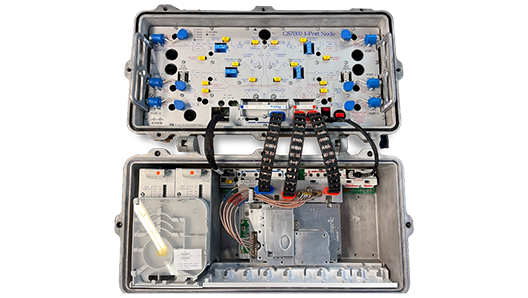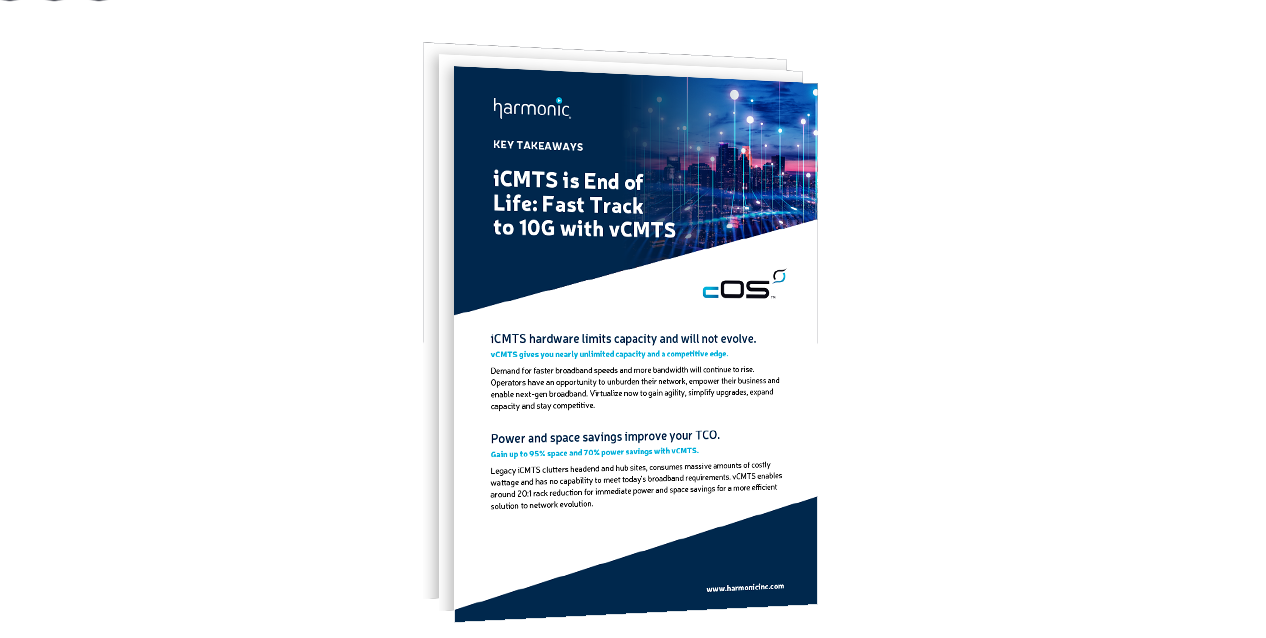Due to the COVID-19 global health crisis, we saw Internet traffic surging by 20-40%. More people at home means increases in online video content consumption. Networks are buckling under the pressure of sudden increases in video streaming consumption.
Yet, it seems that the consumption surge we experienced in the last few months was mostly caused by subscribers viewing VOD assets. This may be in part due to the fact that most of the popular live events were cancelled, like sports. These shifts may be the precursor to what regular traffic may look like in the coming years.
Delivery Workflows Need to Adapt
Looking at the past and projected IP traffic, current IP networks will not be able to sustain further significant traffic increases. Network operators will do their best by providing larger pipes, but these are expensive investments. During a crisis situation, when responsiveness and flexibility are key, network upgrades cannot be considered.
For the record, planning 12 months ahead of time may be required on the CDN side to absorb a 10x increase in traffic, which is common during major international sporting events. Furthermore, operators do not want to dimension the network for peak traffic, so they are in search of a more cost-efficient solution.
Key Points to Consider Before Modifying your Delivery Workflow
Any adaptations you make to the distribution workflow or network infrastructure is an important decision. Of course, the goal is to improve the quality of experience (QoE) for subscribers, while still maintaining a low total cost of ownership (TCO).
To meet increased demand in consumption, and to avoid the strain on the workflow and infrastructure during the recent shelter-in-place period, major streaming providers in Europe, reduced the video quality of their services . It was a drastic measure taken at a time of crisis. It did solve the critical mass issues to meet demands in consumption, but it posed providers with a real-life dilemma: how can we provide the expected quality of service, cost-efficiently?
Video streaming relies on a well-balanced combination of startup time, rebuffering ratio, end-to-end latency and, of course, video quality. However, the bitrate used per segment is often set static for live video streaming. You may be thinking, ‘so what’. Well, the fixed bitrate can be problematic when it comes to quality of experience, since depending on the device and the context that the content is viewed may not be optimal for the provided level of video quality. However, there are solutions that enable providers to reasonably meet demands, without sacrificing on quality of experience. That solution is context adaptive delivery.
What is Context Adaptive Delivery?
Context adaptive delivery makes the workflow dynamic. It balances the context that the video content inherently possesses (the nature of the video content) and the context of the delivery network (how the content is consumed).
How Does Context Adaptive Delivery work?
CAD makes the delivery workflow more agile and responsive to changing network conditions. It improves the user experience, anytime, anywhere, enabling a more constant TCO.
The content delivery system adapts based on three key components that are inherently dependent on one another:
- Content characteristics
- Content consumption
- Content importance
Content characteristics: The content itself is the most dynamic aspect changes in a video delivery workflow. The industry is actively enhancing encoding techniques and codecs to address this need. When building adaptive workflows, you should make use of the latest improvements to optimize video quality, reduce the bitrate and decrease the complexity of live video streaming.
Harmonic’s EyeQ Content-Aware Encoding technology allows you to adapt delivery based on content characteristics. EyeQ is continuously enriched by artificial intelligence techniques, such as Dynamic Frame Rate, Dynamic Resolution Encoding and Elastic Encoding. You can read more about how EyeQ technology was used during the shelter-in-place period to reduce the bitrate and ease constraints on the delivery network.
Content consumption: Content changes over the time, but the number of subscribers watching live content is a fast-moving target. There can be a huge variation between how many end users consume content, depending on the event. This is a nightmare for IP operators. They need to decide whether to over-provision the network or be ready for user complaints.
Using a multi-CDN solution may be a part of the answer. But the global path selection, down to the latest delivery node on the network edge, should be a decision driven by real-time data. Data must be collected and processed, on the fly, to mitigate any possible congestion.
Through a mix of dynamic path selection and manifest manipulation, you can avoid offering end users poor quality content due to them being in a congested area. Consumption makes use of a complete set of delivery telemetry, which are collected along the delivery path at the origin, CDN, edge nodes and clients.
Content importance: The third characteristic is guided by information that the service provider knows based on content importance. Some types of content and events are known to be popular. Think about the biggest soccer and football games, or a channel’s signature TV show.
Knowing that this type of content is popular will prompt the service provide to modify the delivery workflow to ensure better quality for viewers. Or they can modify the workflow to mitigate distribution costs. This third component uses the same tools to improve QoE , but instead of being automated based on consumption data, it’s instead sparked by expectations in demand.
Improve QoE for Live Streaming with Context Adaptive Delivery
The global health crisis highlighted issues with VOD delivery. But soon, live sports, events and TV shows will resume. When the demand for both VOD and live video streaming are combined, networks will even be under even more pressure, and QoE will likely suffer.
From an operator standpoint, it is crucial to adapt the delivery based on the most popular content. A delivery mechanism aimed at optimizing the end-user QoE is the answer. A context adaptive delivery solution should take into account the full contextual set of variables that contribute to the final end-user experience: resolution, image complexity, color gamut, end-user devices, and more.
It’s now more apparent than ever that static delivery workflows — without an efficient measurement of what happens everywhere in the delivery path, from encoding to the final edge node — are sub-optimal.
Context Adaptive Delivery Made Simple with SaaS
The global end-to-end delivery optimization approach we’ve just described can be used in a variety of situations and delivery networks. The flexibility of a SaaS approach will ease the transition to a dynamic model, away from static workflows, inherited from the traditional broadcast world, or from an OTT capex model.
You can rely on well-known techniques such as A/B testing to perform a soft test of configuration improvements, as well as diagnostic sessions to more precisely investigate your company’s particular pain points.
We expect this to become the norm, and it’s a natural evolution with a SaaS solution. Want to learn more about how you can escape from a ‘’set and forget’’ paradigm and transition to context adaptive delivery? Harmonic is here to answer your questions and start a discussion.








